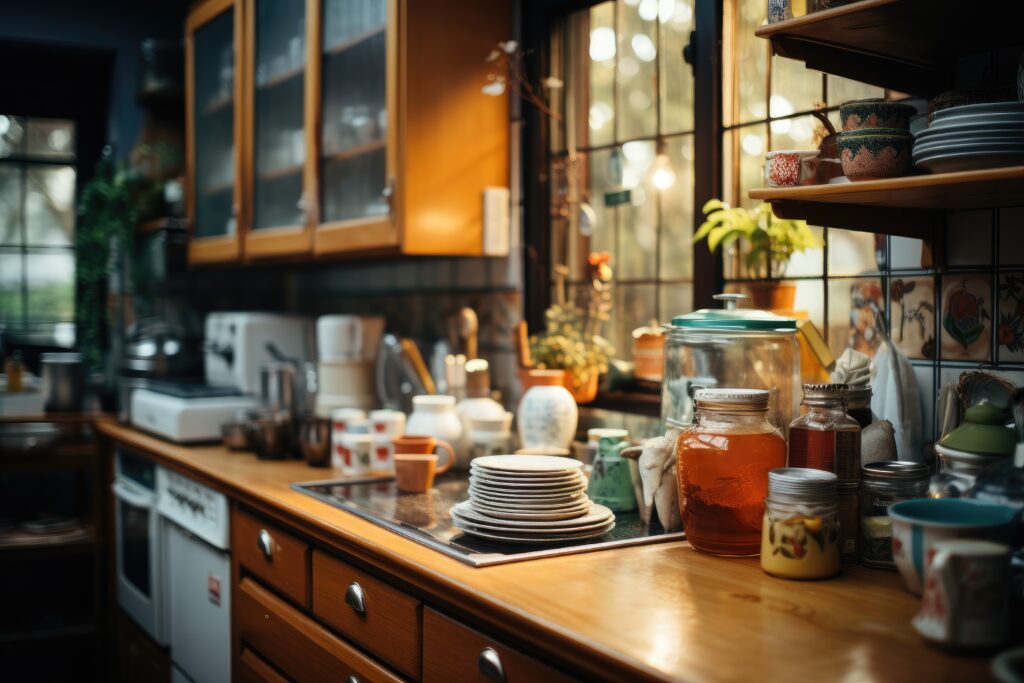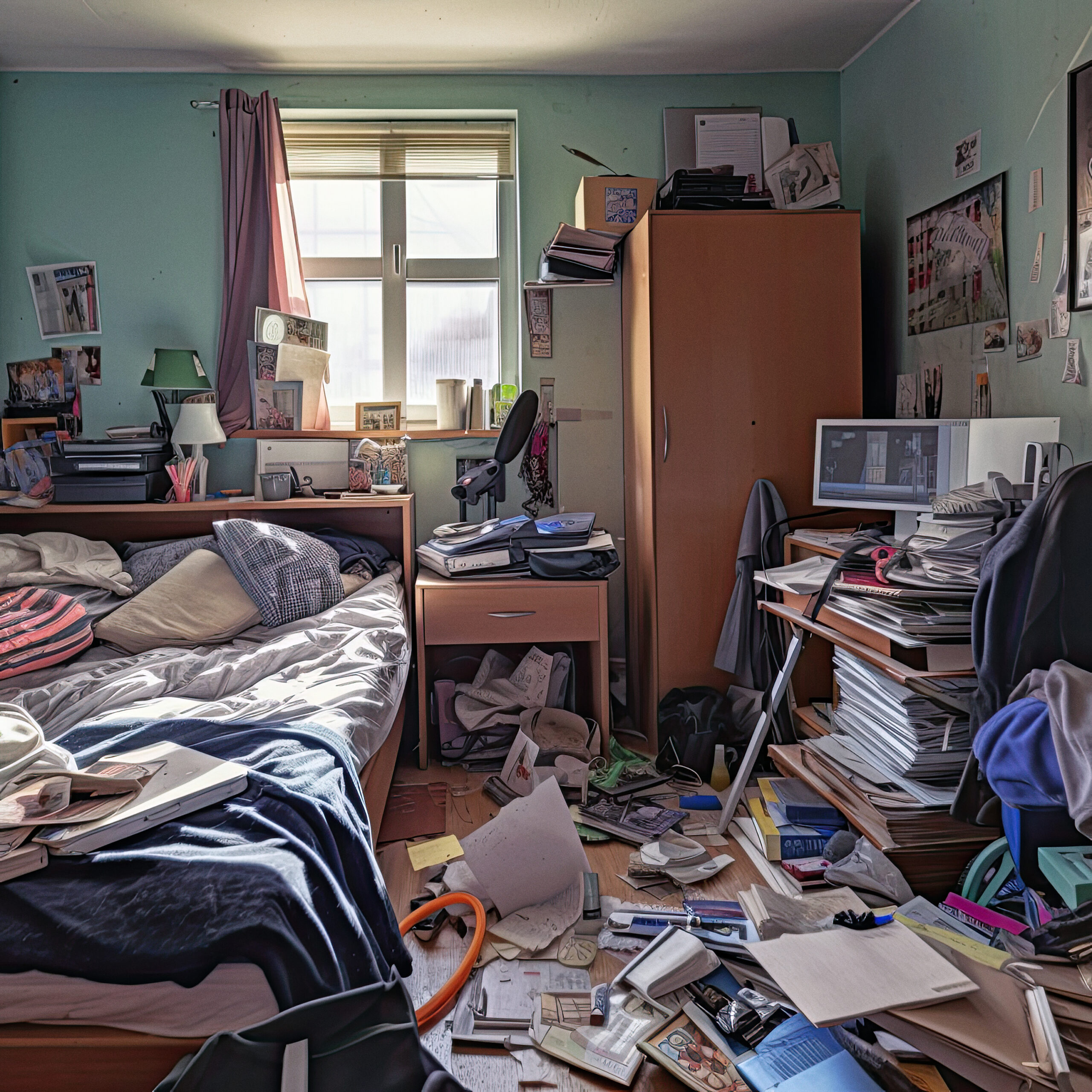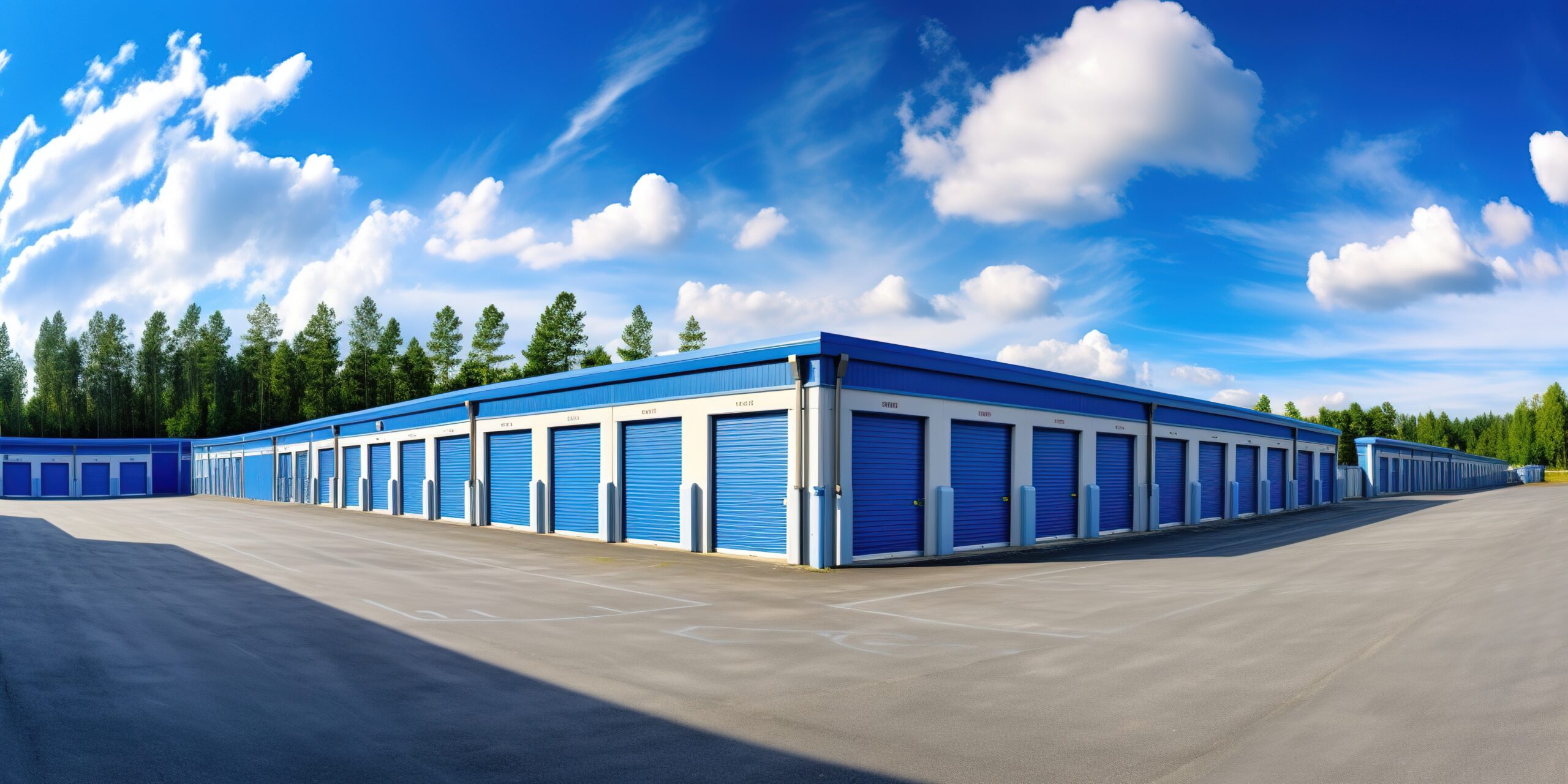We’ve all got clutter! You’re not alone! This is one of the first things I say to new clients because there is so much shame and guilt about not having your home perfectly in order. So I made a list of the top 10 problems I see every day with some practical solutions of how to solve them.
- Spare Change: Loose change can easily accumulate in random areas, like the kitchen junk drawer, the top of a dresser and in the laundry room. This is kind of a “if you can’t beat them, join them” solution, where you put a designated jar or container in the spots where people pile loose change and then empty them every month or so. I keep a sturdy canvas tote bag in the Coat Closet and periodically empty all the change in the house into it and then take it to a local store to turn into cash or gift cards. This is fun to do with kids or grandkids!
- Spare Keys: Having multiple spare keys lying around can lead to confusion and clutter. Create a designated spot for spare keys, such as a key rack or a small drawer. Label each key and store them in a secure and easily accessible location. I use labeled bins in my basement (short-term storage area).
- Recipes: Recipes can easily pile up and create clutter in the kitchen. Consider digitizing your recipes by scanning or taking photos of them and storing them in a digital recipe organizer app or folder on your computer. Alternatively, create a physical recipe binder or box and organize recipes by category for easy reference. I scan mine into Evernote, which is where I keep all of my digital files.
- Papers That Need Action: Papers that require action, such as bills, invitations, or important documents, can quickly become overwhelming if not properly organized. Create a system for managing these papers, such as using a filing cabinet or designated folders. Sort them into categories, such as “To Pay,” “To Do,” or “To File,” and regularly review and address them to prevent clutter from building up.
- Miscellaneous Hardware and random Accessories that come with new stuff: We always create 2 new bins for clients that they have never had before. One gets labeled “Misc. Hardware” and the other one is usually called “Misc. Pieces”. That’s where all the Random stuff goes. These bins are so helpful when you’re moving and you’re scared to throw these items away! Having these bins tucked away in your Short-term Storage area will clear a lot of useless clutter out of your closets, office storage, and kitchen junk drawer.
- Pet Supplies: Pet supplies, such as toys, leashes, medicines, carriers, grooming tools, can quickly clutter up your home. Most of the items fit into 1 of 2 categories: There’s the stuff you are currently using, and then all of the stuff you’re not! Keep the current stuff handy in a designated spot, and put the overflow in your Short-term Storage area. You may use bins or baskets to separate and organize the different types of supplies. This will help keep your pet’s belongings easily accessible and prevent them from being scattered around the house.
- Memorabilia: Memorabilia, such as souvenirs, stuffed animals, sentimental items, or childhood mementos, can accumulate and take up valuable space. Consider creating a memory box or a designated area to store these items. Select only the most meaningful pieces and display them in a shadow box or on a memory wall. Digitize photos or sentimental documents to save space while preserving the memories.
- Kids’ Art Projects: Children’s artwork can quickly overwhelm your home if not properly organized. Create a designated display area, such as a gallery wall or a bulletin board, to showcase their artwork. Rotate the displayed pieces regularly to keep it fresh. For long-term storage, consider using a portfolio or a file box to store their artwork by year or grade.
- Office Supplies: Office supplies, such as lined pads, staples, pens, paper clips, and sticky notes, can easily clutter up your workspace. I’ll say right away that you probably have too many of all of it! Especially pens and staples! And rubber bands don’t last. You can use desk organizers or drawer dividers to keep these items neatly arranged. Sort them by category and label each container for easy identification. Regularly declutter and restock your supplies to maintain an organized workspace.
- Electronic Cables and Accessories: Electronic cables and accessories can quickly become tangled and create a mess. You can use cable organizers, such as cable clips or cable sleeves, to keep them neatly organized. For the past 30 years, I have used zip-lock plastic bags. As soon as we get a new gadget, I put all of the accessories into a bag and write on the outside with a Sharpie, what it is and the date. Then all of these electronics go into 1 basket. This system has worked incredibly well all these years! You can also label each cable or use color-coded tags to easily identify them. Store electronic accessories, such as chargers or headphones, in designated pouches or containers to prevent them from getting lost or tangled. I use small plastic shelves to separate and organize the USB cords we use with all of our devices.
By implementing these organizing strategies, you can effectively manage and declutter the top 10 items that often cause stress and clutter in our homes. Remember to regularly reassess and declutter these areas to maintain an organized living space. Embrace the process of organizing and enjoy the benefits of a clutter-free and stress-free home environment.



